Current Projects
Here is some of the exciting work we are currently engaging in. Working via our organizational pillars, our goal is to level up our impact and strategically overcome conservation concerns, serve the community and build capacity within the management systems to the best of our capabilities!
Read on for a comprehensive list of all our on-going work.
The Primary Response Team (PRT)
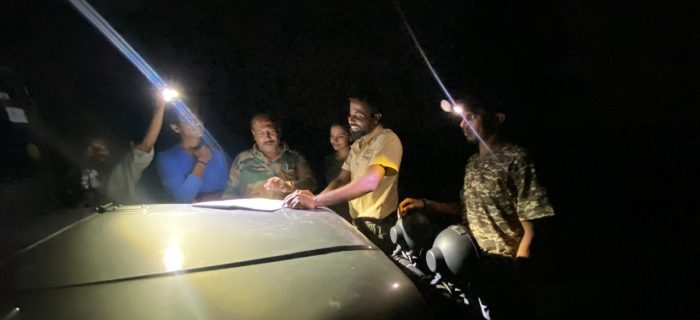
The Primary Response Team (PRT) is a project that was envisioned along with the local forest authorities to help mitigate on-ground conflict instances. The current system in Bannerghatta relies on information coming in from local farmers who report elephant movement outside the forest and in farmlands. The forest department then deploys a team of ground staff to help drive the elephants back into the forest using loud sounds by yelling or deploying fire crackers.
The primary purpose of the PRT is to avert loss of human life, crop and property damage through prompt action by people trained in HEC mitigation. This is to be achieved through swift reaction to crop raids, which additionally gives the team official recognition. The PRT ensures and liaises for tolerance of wildlife, recognizes efforts of the forest department, further to strengthen the efficiency of the KFD’s Rapid Response Team [RRT] by responding to conflict situations, averting cropraids in a fool proof and active manner.
The team consists of 1 NGO member, 1 Personnel from the Forest department and 1 village member from the conflict villages. It serves as a first line of defense and a way to manage crowds, which easily develop during active conflict situations, until the Forest Department’s RRT attends to a crop raiding event to avert it successfully. Via this project we will continue to build a systematic database of conflict incidents and analyze conflict patterns, causal factors and accordingly make appropriate recommendations for conflict management. The data collection is via an app system which is being created specifically for the PRT project, it includes baseline data collected from our fieldwork over the years like accessibility stations, roadways and elephant attractants like fruit trees and water bodies.
Forest Fire Mitigation (FFM)
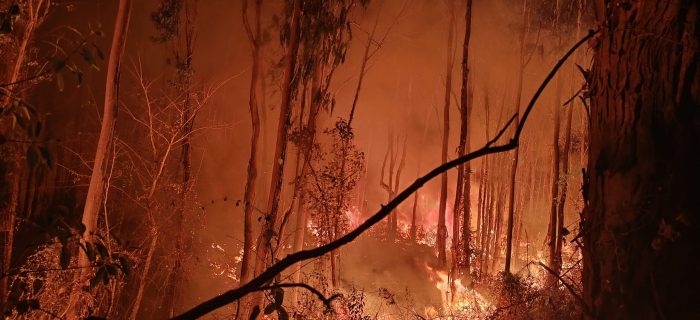
Bannerghatta National Park (BNP) is surrounded by numerous villages, posing a risk of man-made forest fires due to the high human population in the area. Forest fires are a significant threat to the ecosystem, and controlling them is crucial to maintaining undisturbed wildlife habitats. Effective forest fire management practices are essential to protect forests and the communities that depend on them.
The Karnataka Forest Department handles fire management in these ranges, as forest fires fall under the state government’s responsibilities. Most fires at BNP are man-made, caused by various factors like retaliatory actions against wildlife, stubble burning, poaching, and carelessness.The fire season at BNP typically runs from February to April, ending with the pre-monsoon showers in April or May. Prevention of fires at BNP involves creating fire lines, while detection is done through satellite monitoring or manual monitoring from watch towers. Staff members manually beat down fires using fire beaters, but these are insufficient for quickly spreading wildfires. Limited vehicles and inadequate safety equipment pose challenges for the firefighting team.
A Rocha India has been working alongside the forest department in Bannerghatta to aid in forest fire mitigation for decades. We mobilize resources as join in with the first responders, additionally we conduct regular forest fire mitigation workshops and awareness programs in surrounding villages and towns with the support of the forest department. We currently aim to decrease 15% of major fires and 25% of minor fire incidents through technology (use an app based on remote sensing monitoring & alerting systems), supplementing the forest department fire fighters with essential and advanced equipment like fire resistant gear, water bottles, appropriate footwear, fire blowers and a mobile firefighting unit.
Grassroots Afforestation Program
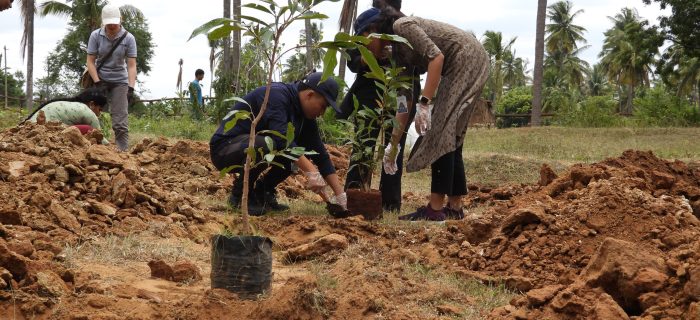
The Grassroots Afforestation Program focuses on addressing one of the most devastating and impactful habitat degradation consequences of anthropogenic activity – deforestation. We are witnessing continuous reports of green cover being lost to development in India. Most of the habitat that remains is also under immense biotic pressure and has lost some of its quality. The GAP initiative is part of our on-going effort to rewild our landscape. Using a bottom-up approach for tree plantation and forest restoration, we involve local communities, schools, colleges to plant and maintain these plantations long term. Building a sense of stewardship towards nature within the community, we encourage volunteers from organizations and even individuals to collaborate in this noble effort. In our experience, by involving the local community, we have been able to mobilize local knowledge of indigenous flora, its effects and impacts on the ecosystem including the health of the people living around the BNP landscape and have found many passionate people whose investment in plantation activities goes beyond just the event.
Over the years we have successfully planted one mini-forest and over 2000 saplings across the BHL and even in select locations like school & college campuses within Bangalore city. Our mini-forest plantation is currently 6 years old, and almost 98% of the saplings planted are growing successfully. This plantation is contiguous with the Bannerghatta forest and mimics its floral composition. It was created with the aim of enlarging the usable habitat available for wildlife and we are happy to report that it is being regularly used by several species already despite its nascency.
In the coming years we are looking forward to creating stronger collaborations with institutions, governments, local communities and individuals to mobilize efforts for grassroots afforestation initiatives. Our current goal is to plant 4000 saplings of indigenous tree species around the BHL, which will help sequester an estimated 45,367 kgs of CO2 from the atmosphere. We also aim to help create an onus within the local community by conducting regular maintenance activities like manuring, mulching, watering, guarding.
Waterbody Restoration (WBR)
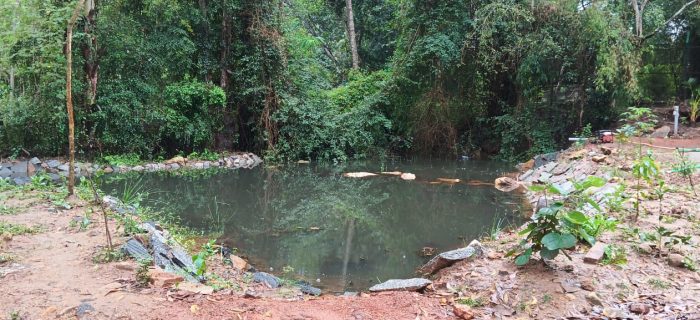
Waterbody restoration plays an important role in safeguarding essential ecosystems and habitats for biodiversity. Freshwater bodies face an increasing threat from human activities like pollution, habitat degradation, climate change and over fishing. Healthy water bodies support a host of biodiversity and also serve as a source of potable water suitable for human consumption and irrigation needs having direct effects on livelihoods and quality of life.
We have identified a few water bodies in our landscape that have the potential to be restored into fully functional ecosystems. They have been previously used for paddy cultivation and thus are in need of some earth works to restore their original structural integrity and unclog inlets and channels. We believe that these lakes play a vital role in maintaining the health of the local ecosystem biodiversity and more importantly maintaining the local hydrological cycle. This effort will also aid in groundwater harvesting and recharge underground aquifers through infiltration as water seeps through the soil and revives the water table.
The lakes will also be rehabilitated with plantation drives involving naturally occurring grassing, aquatic species and wetland plants. In time this will help with reduction of surface runoff during the monsoon seasons. The water bodies will be able to hold up to 2,50,000 cubic tonnes of water after restoration. We will be establishing an observation center near the lake as well to provide opportunities to students and researchers as well as aid in our on-going environmental education programs.
Early Warning Systems (EWSUSB)
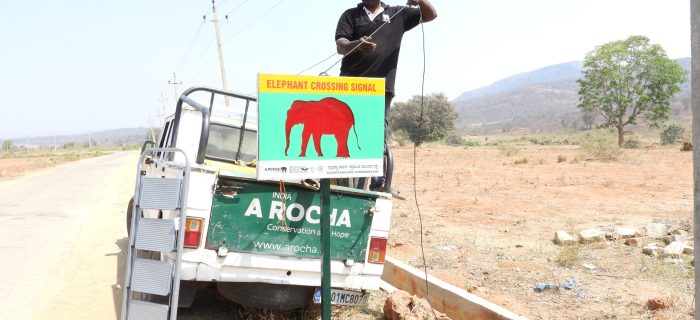
Linear infrastructure development has emerged as a conflict and conservation concern across India. As national highways, state highways and other important roadways cut through wildlife habitat, there are several opportunities created for wildlife to use them as well. Some of these roadways, which are constructed very close to protected areas, become prone to conflict instances as they are being used regularly by people and animals. A Rocha India has been instrumental in developing an Early Warning System to address this issue in the Bannerghatta region.
Extending to an area of 260km2, the Bannerghatta National Park has 22 public thoroughfares passing throughout its expanse. The total length of these thoroughfares extend to around 69.4 kms in length, encompassing all four wildlife ranges (viz., Bannerghatta, Anekal, Harohalli and Kodihalli) of the protected area. The early-warning signals will be installed at 22 locations (Fig 4) along the 22 public throughfares, ensuring maximum coverage of the road-networks and for easy visibility to the commuters.
Our proposed technology is a ‘smart fence’ system powered by infrared-laser technology that will identify elephant movements’ across the road-networks at pre-identified elephant movement paths. The signal boards begin blinking as elephants approach the road due to the laser sensors’ detection of their movement. As a result, commuters are warned to slow down or stop, ensuring the safety of the animals and themselves, thereby avoiding accidental encounters. An SMS alert is sent simultaneously to forest officials, informing them of an elephant’s presence, thus enhancing elephant population monitoring in the protected area as well as piloting technological interventions (public alert systems) for elephant-human coexistence.
Developing Organic Farming Practices
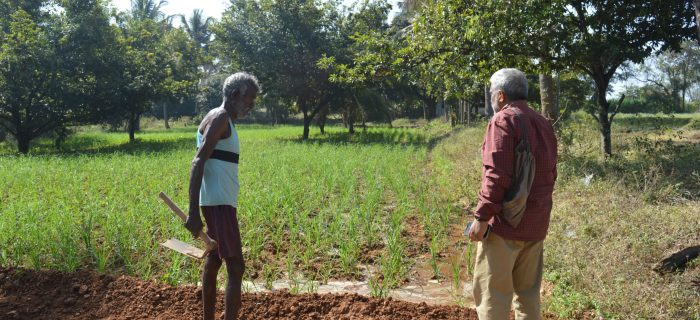
Our organic farming project includes working with farmers in the BHL that possess small land holding. This project was initiated in 2021, as a way to mitigate the harmful effects of commercial farming. The villages surrounding the Bannerghatta National Park fall within an eco-sensitive zone as they are important habitats for wildlife and people. Some of the commercial farming practices cause a lot of damage to the environment due to the use of excessive pesticides and chemical fertilizers. These substances cause havoc to the quality of soil and the microbiome ecosystems.
Our organic farming work aims to turn away from chemical-based agriculture and to promote and support organic farming which would help in restoring the ecosystem of the area, improve the livelihood of the farmers and thereby decrease the human wildlife conflict in the region. The outskirts of Bangalore has multiple clusters of farming villages where we have identified suitable landholdings wherein sustainable practices like organic farming will be best fitted, as we have worked in the Bannerghatta-Hosur region for decades studying the dynamic nature of Human-Elephant Conflict which severely affects the farming communities of this region. We will help design an inclusive approach with the local organic group where farmers participate in every step. We help train the locals to take up the implementation of these practices in future for themselves and for others with the help of multiple workshops and focus group discussions.
We build capacity among farmers, working with a group of 15 at a time to help with crop and seed selection, providing organic manure as well as teaching them the skill of organic manure preparation. We perform soil tests regularly to gauge the improving quality of soil as farmers turn away from use of harmful chemicals. Further to this we create nurseries and seed banks to help sustain the work. Plans for setting up supply chains for the produce are underway.
Elephant anti-Depredation Dog Squad (EaDDS)
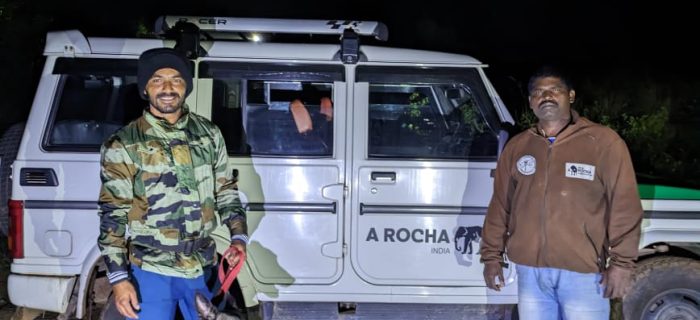
Bannerghatta NP (BNP) is a highly fragmented ecosystem notable for the increasing concern of human-elephant conflict. With a total park area of 260 sq. kms. BNP is contiguous in the south with one of the largest habitats available to the Asian elephant. The park is surrounded by 77 eco-sensitive villages that mostly practice subsistence farming. The long forest-farm interface produces ample opportunities for elephants to leave PA limits and venture into human-use areas resulting in retaliatory losses for both people and elephants like crop damage, threat and in extreme cases loss of life. According to current statistics approximately 400 human and 100 elephant deaths take place yearly in India due to conflict situations, of which Bannerghatta within the Bangalore circle reports the highest incidents of conflict within the state of Karnataka. Despite several mitigation efforts by the KFD-BNP, human-elephant is still an exacerbating concern compounded by multiple factors such as habitat fragmentation, rapid change in land-use and behavioural propensities of crop raiding elephants. For the purpose of averting loss of human life, crop or property damage in regions where elephants are likely to enter human-inhabited areas, prompt action by people trained in human-elephant conflict mitigation is crucial. Currently the state forest department in Bannerghatta mitigates conflict solutions by responding to distress calls or incident reports conveyed telephonically. A Rapid Response Team (RRT) consisting of trained forest guards respond to these incident reports to try and manage the conflict situation by driving elephants back into the forest using firecrackers. Albeit useful, this mechanism has some gaps that we seek to address using a canine squad to supplement patrolling efforts.
The canine squad is a novel step in India to try and minimize instances of Human – elephant conflict with a particular focus on reducing mortalities of both elephants and people. It would act as a force multiplier to the current on-going efforts of the forest department to mitigate conflict.
Working line dogs have proven to be a great asset to humans due to their superior olfactory abilities by virtue of being part of the canine order. They surpass our abilities to sense smells by 10,000 – 100,000 times. This heightened ability along with their tendency for obedience & capacity to be trained by people has benefited many sectors of our society in areas of threat detection, creating early warning or alerting systems as well as personnel security. This project aims to harness these incredible canine abilities to address the issue of human-wildlife conflict.
Read more about this exciting work here.
Fast-track Ex-gratia Schemes (FES)
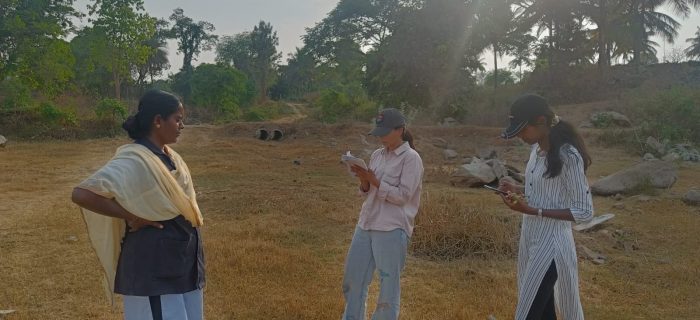
In India, when there’s harm caused by human-wildlife conflicts (HWC), the government supports a significant policy of giving ex-gratia payments or financial compensation. Most states follow these policies. It’s crucial to create creative and scalable solutions to reduce the impact of HWC, especially for endangered species like elephants, tigers, and leopards. Using direct, technology-based approaches is attractive because they can work beyond the existing culture, socio-economic conditions, and political systems where HWC happens (Maffey et al., 2015). Providing compensation or ex-gratia schemes for crop loss or other human-wildlife conflict issues helps to lessen any hostility residents may have toward the animal or forest department frontline staff. Fast track ex-gratia schemes will ensure and liaise for tolerance for wildlife in general and recognize efforts of the department in conflict mitigation. Additionally, delays in follow-up tasks like gathering HWC data might cause information to be lost, which could make conflict management planning more difficult. The establishment of a FES app will aid in/strengthen the efficiency of the KFD’s response to compensation claims and fasten the process where the gap between availability and accessibility is bridged.
The FES system aims to revolutionize the process of claiming compensation for human wildlife conflict incidents, making it more efficient and user-friendly by directly involving the individual in the filing claim process. With this app, individuals who have experienced crop damage or loss of livestock/human life due to wildlife encounters can seamlessly upload evidence and incident details directly. This digital submission will replace the traditional paperwork and expedite the reporting process ensuring the forest officers receive real-time information for verification. By leveraging technology, the app contributes to a more accessible, transparent, and swift compensation procedure that will ultimately foster a harmonious balance between wildlife conservation and community welfare.
Restoring Wildlife Corridors
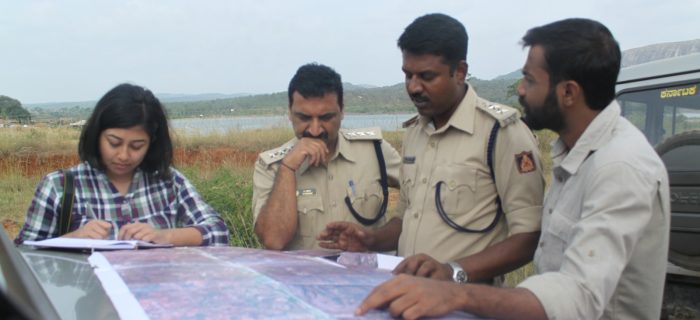
Wildlife corridors are areas of natural habitat that connect fragmented habitats and allow for the movement of wildlife between them. These corridors help maintain genetic diversity within populations, facilitate migration, and reduce the chances of inbreeding. They are essential for the conservation of biodiversity and the long-term survival of various species. By providing safe passage for animals, wildlife corridors play a crucial role in preserving ecosystems and preventing the isolation of populations. They also aid in mitigating the negative impacts of habitat fragmentation caused by human development and climate change.
Efforts are being made worldwide to establish and protect wildlife corridors to ensure the health and survival of wildlife populations. Through collaboration between governments, conservation organizations, and local communities, it is possible to create a network of interconnected corridors that support biodiversity and promote the overall well-being of ecosystems.
India currently has 101 elephant corridors that have been identified in collaboration with the forest department, Asian elephant experts, research institutions and NGO’s. We have been successfully monitoring 3 corridors within the BHL for functionality via grid surveys and also noting down any development activities that are coming up in the corridors. We conduct regular awareness & sensitization programs in the villages surrounding these corridors via streetplays, workshops and other sensitization activities. Our focus when addressing the education outreach regarding corridors is on reaching out to school children, especially those from government schools. We use tools like art – origami, clay modeling, wall painting -, interactive sessions and games to help the student understand corridor concepts and also ensure their safety by giving them vital information about sharing their living space with elephants.
Eradication of Invasive Alien Species (IAS)
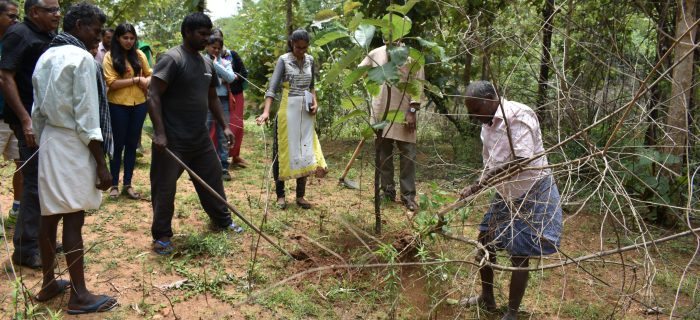
Invasive or alien plant species can cause a wide range of disturbances to the local ecosystem and its biodiversity. Since most invasive species grow prolifically, their presence in any forest ecosystem poses a major management issue and a threat to local flora and fauna. In India one of the most menacing species of invasive alien plants is Lantana camara. Its introduction is linked with the colonization of the Indian sub-continent in the 1900’s by the British empire and it has since spread far and wide.
Today state governments and forest departments have declared the presence of lantana as a major conservation and environmental issue as it leads to habitat degradation. In Bannerghatta some other invasive plant species found are Prosopis juliflora and Chromolaena odorata. We aim to invest in the removal of these alien species in selected forest zones within BNP that need intervention on a priority basis. These model plots will be monitored for regrowth and appropriate measures of eradication will be implemented.
Synthesis of Ecological Information through Wildlife Monitoring
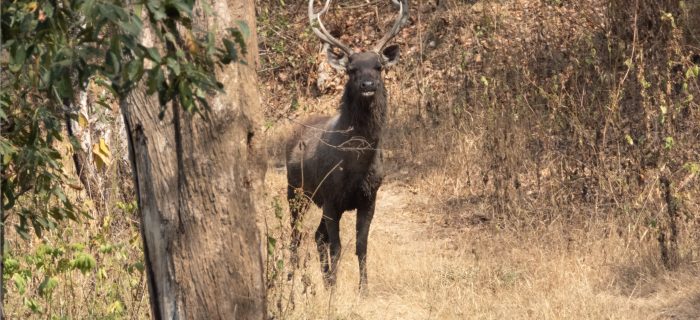
Wildlife monitoring plays a vital role in assessing the health of an ecosystem. It aids in data driven decision making & smart wildlife management. It is also an essential component of conservation especially in a fragile ecosystem like the Bannerghatta – Hosur Landscape (BHL) that faces unique challenges like biotic pressure. With BNP receiving special interest as an important elephant habitat, the protection of the park has been firmed up. An eco-sensitive zone (ESZ) of 268.96 square kilometers was notified in 2016 to cushion the park against disturbances. However, its area was reduced almost by 30 per cent in 2020 to facilitate developmental activities such as roads and mining. Hosur & its adjoining forest divisions are used as a habitat contiguous with BNP by wild animals. Between 2012 & 2016 A Rocha India published work on the mammals of Bannerghatta, confirming the presence of 17 species via a rigorous camera trapping exercise within the protected area.
Monitoring wildlife in the Bannerghatta – Hosur Landscape will help to comprehend the nuances of how ecological balance is maintained and what can be done to restore it in a degraded landscape. Select terrestrial mammal species will be monitored under this project by gathering data on their population ecology & conservation needs. This will promote better biodiversity, enhance species recovery and alleviate human – wildlife conflict through improved & informed management of wildlife.
Currently we are studying the mammal diversity of the Bannerghatta National Park using mark-capture-recapture methods. Efforts are also underway to establish a baseline study of the distribution of elephants across the tri-state region of Karnataka, Tamil Nadu and Andhra Pradesh.
Tackling Illegal Wildlife Trade
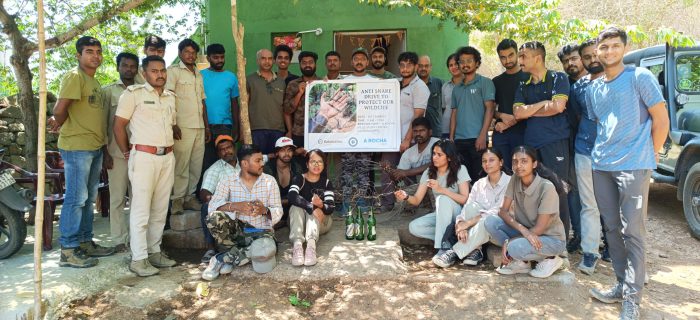
Wildlife crime involves activities like trading, importing, exporting, and consuming wild flora and fauna in violation of laws, posing a risk to species and potentially leading to extinction due to unsustainable practices.
Enforcement of wildlife laws faces challenges due to the sophisticated nature of wildlife crime, including a lack of intelligence-gathering capabilities, risk management procedures, and awareness among prosecutors. The absence of contemporary enforcement tools and training opportunities further impedes effective enforcement.
Specialized investigative tools, akin to those used by financial intelligence units, are not fully utilized in wildlife crime cases. Wildlife law enforcement officers may lack the same level of support and training as counterparts in customs and police services, making them ill-equipped to tackle the complexities of wildlife trade. This project is focused on stopping the illegal trade of wildlife in a specific area within Bannerghatta Hosur landscape. To do this, they plan to increase their watchfulness and create networks of informants who can report any suspicious activity related to wildlife trafficking. They also want to educate people about why it’s important not to participate in this illegal activity.
Environment Education through Digital Literacy
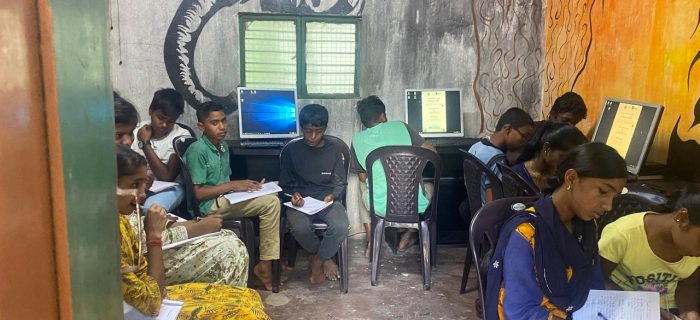
The state of Karnataka is one of the most biodiverse states in India, comprising a variety of ecosystems ranging from different forest types to grasslands, riparian, and coastal ecosystems. Within this diverse landscape, numerous species of plants and animals thrive, making Karnataka a hotspot of biodiversity in India. It encompasses the majestic eastern & western ghats to the sprawling plains of the deccan plateau. With over 25,000 species of flowering plants, 181 species of mammals, 472 species of birds, 173 species of reptiles, and countless other forms of life, Karnataka stands as a true representative of Indian biodiversity. Karnataka is home to a significant number of endangered species, including the iconic Bengal tiger, the majestic Asian elephant, and the elusive black panther. With over 60 species listed as endangered or critically endangered, urgent action is needed to safeguard these treasures of nature.
Within the existing network of protected areas in Karnataka, which serve as vital habitat and refuges for wildlife, is the Bannerghatta National Park. Nestled in the outskirts of Bangalore, it provides a vital green lung for the ever growing metropolis, serving as both a carbon sink and a source of oxygen for the city. The national park is also contiguous with the Hosur forest division forming a connected habitat patch known as the Bannerghatta – Hosur Landscape (BHL). Bannerghatta is surrounded by approximately 77 eco-sensitive villages that are of great importance from a conservation perspective. Some of these villages fall within wildlife corridors that are being used by elephants and thus it is imperative for the local communities to be aware of their surroundings to not only safeguard the future of wildlife but also for their own safety. Beyond this, healthy ecosystems play a crucial role in the lives of children and villages nestled in forest fringe and forest – farm interfaces. For these communities, the forests provide not only sustenance but also cultural identity and livelihoods. Forests supply clean water, fertile soil, and medicinal plants, ensuring the well-being of both people and wildlife. For children growing up in these forested regions, the ecosystems surrounding them are not merely classrooms but life-support systems, teaching lessons of interconnectedness, resilience, and harmony with nature.
Aiding Rural Infrastructure Development and addressing village hygiene concerns
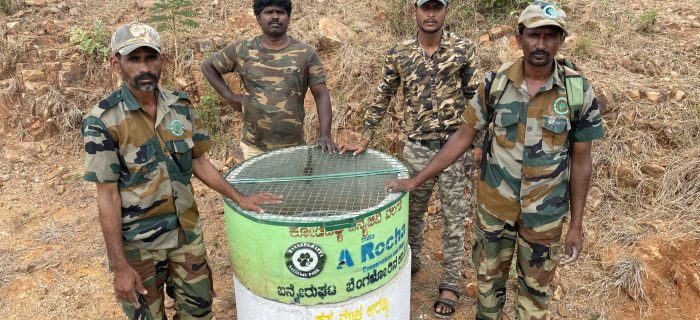
A Rocha India recognises the critical need to improve healthcare access and village hygiene management in both urban and rural areas surrounding the Bannerghatta National Park. In collaboration with Primary Health Centres and Gram Panchayats, our project aims to address existing gaps in healthcare infrastructure and sanitation facilities to enhance community well-being and reduce the incidence of human-wildlife conflict.
A preliminary assessment of Primary Health Centres(PHC’s) in BNP will help evaluate their status, including equipment, infrastructure and resources. Simultaneously we are conducting surveys to identify villages with instances of human-wildlife conflict and open defecation. This dual approach will prioritise villages based on the severity of conflicts and existing sanitation challenges. In collaboration with Gram Panchayats, the project aims to improve the village hygiene by building community toilets in one village per year over the next three years. This initiative will promote personal hygiene and reduce open-defecation, thereby minimizing the spread of diseases. Waste disposal practices will be improved by setting up community waste bins in four park-edge villages. Workshops and awareness programs on health and hygiene will be organized between January 2023 and January 2026, to empower communities with knowledge and skills necessary for maintaining good hygiene practices.
Marine Conservation Program

Over the past two decades A Rocha India focus on the conservation and awareness of landscapes and biodiversity of terrestrial fauna and flora of south India. Through our work we have also identified a host of conservation needs pertaining to the vast coastline of Southern India which extends in the peninsular region for 5,015.4 kms that includes Tamil Nadu, Kerala, Karnataka and Andhra Pradesh including the Lakshadweep and Andaman Nicobar Islands. The coastal ecosystems of India include estuaries, lagoons, mangroves, backwaters, salt marshes, rocky coasts, sandy stretches and coral reefs plays a vital role in the ecological stability of the country.
Many communities are also dependent on these ecosystems for livelihood needs. A vast majority of India’s biodiversity is found within its marine seascape. There are 69 species of mangroves recorded in India, 568 species of sponges, more than 225 species of corals, more than 2900 species of crustacean, 3,370 species of marine molluscs, more than 200 species of bryozoans, 765 species of echinoderm, 200 species of tunicates, more than 1,300 marine fishes, 26 species of sea snakes, 5 species of sea turtles and 30 species of marine mammals. These ecosystems however are under major threats from developmental practices, habitat loss,
pollution, over exploitation of resources and climate change.
A Rocha India has identified several key areas along the coastlines of peninsular India with increasing conservation needs. In addition, there is a need for systematic awareness regarding the importance of coastal ecosystems among locals that live in and around coastal cities and towns. We hope to fill these gaps as a priority while establishing the marine conservation program.

© 2024 A Rocha India
National Office & Field Study Centre
#13, Kaserguppe Village,
Bilwardahalli (Dakle), Bannerghatta (Post),
Jigani (Hobli), Anekal (Taluk),
Bangalore South-560083
Karnataka – IN